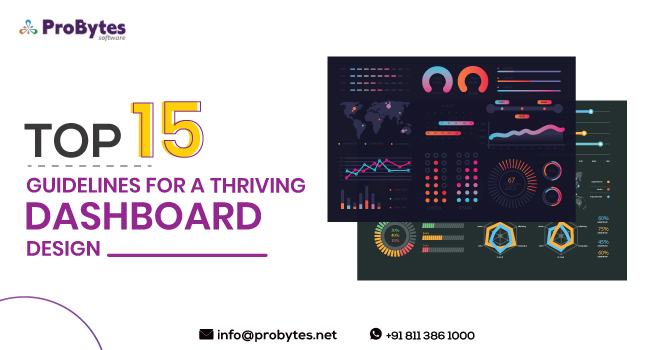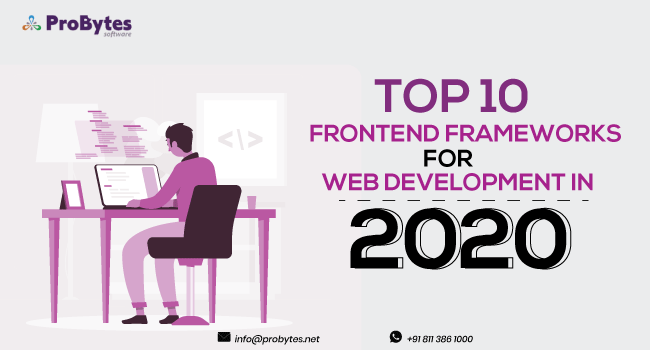Blog Category(283 Blogs)
Web Development with MEAN Stack- The Complete Guide for your Business
Web development with MEAN Stack is one of the leading trends increasingly being used to develop dynamic websites, mobile applications, and web applications. In this blog, we will look into what is MEAN stack and its components. We will also explore the advantages of using MEAN Stack for web development.
What is MEAN Stack?
MEAN is an acronym of
MongoDB
Express JS
AngularJS
Node.js

MEAN Stack can also be defined as an open-source software toolkit that can be used for full-stack development of prototypes and website applications. This stack contains all the technologies essential for building a website, right from database system to the execution environment.
This JavaScript-based development toolkit enables developers to seamlessly and efficiently work on both the front end and backend of a website.
Architecture of MEAN Stack

The architecture of a MEAN Stack application includes 4 major components:
Read Also: How Much Does It Cost To Create a Website Like Upwork?
Angular JS – It is the front end of the website framework and accepts client requests and displays the results.
Node.js – This server-side platform handles requests from the client and the server
Express JS- This framework is used for building web application APIs. It forwards requests to the Database and gets the response.
MongoDB- It is the database that stores all the data and retrieves when needed.
The MEAN Stack architecture operates in the following way:
Request from the Client is sent to Angular JS, which makes the request. The request is then transferred to NodeJS Server, which parses the request to the Express.JS that transfers the request to MongoDB.
The processed request is then transferred back from MongoDB to Express JS, and from here to NodeJS server and back to Angular JS. The response is displayed on the client interface.
Components of MEAN Stack
In this section, we will look into detail about each component of MEAN Stack.
Angular JS
This open source JavaScript MVW (Model-View-Whatever (works)) framework maintained by Google was developed by Miško Hevery. It is used to design web applications that can be personalized.
This framework offers a complete client-side solution with its Document Object Mode (DOM). Angular JS is built on HTML templates and can be used to bring in Model View Controller architecture to browser-based applications.
As it is based on HTML, this UI framework can be used to express application components with ease. Features such as data binding and dependency injection reduce the need for extensive coding.
The Library of Angular JS consists of functions that can be used for creating web applications. The frameworks help in calling and implementing the web code.
The basic features of Angular JS framework include form validation, reusable components, dependency injection, data binding, routing, and deep linking.
All these features enable the creation of a CRUD (Create, Read, Update, and Delete) application. DOM can be decoupled from the app logic, which enhances code testability including end-to-end testability, unit-testing, mock testing, and test harness. Moreover, Angular frameworks support HTTP, AJAX, and Observables.
Node JS
Node JS has an event-driven non-blocking I/O model that makes it perfect for building data-intensive web servers and web applications in real time. This multi-platform language is compatible with OS X, Linux, and Windows.
The best feature of this asynchronous language is that it allows for 2-way communication between server and the client. Node.js finds application in construction of client-side applications, game servers, chat applications, streaming servers, and other real-time applications in a collaborative environment. The in-built server of the Node.js makes it easy to deploy Mongo database to Cloud.

Express JS
Express JS in the backend enables seamless interaction between the database and the client interface. This lightweight server-side framework can be used for building single page, multi page, or hybrid websites.
It is a single-threaded asynchronous language that features an MVC structure. This framework is coded in JavaScript and uses Pug engines to support templates.
One feature of Express.js is that it prevents the overwriting of variables, which can save time and effort while building a website. Express enables the dynamic rendering of HTML pages by passing arguments to templates. It also features multiple APIs for easy routing.
MongoDB
MongoDB is an open source database written in C++. Compatible with multiple platforms, this database stores data in binary format. The document-oriented NoSQL database can easily handle large tables that have up to millions of data.
This database allows you to use different fields and data structures for each document that resembles an OOPS object. MongoDB doesn’t update the entire data every time you enter a new field, which is one of its highlighting features.
The biggest advantage of using MongoDB is that it is document oriented. As all the data is stored in documents rather than a relational format, it is flexible and high performing. This database has an index, which speeds up search and response time.
Read Also: Web Development Vs Web Design – Want To Know The Difference?
MongoDB splits data while storing. This method enables load balancing and also manages the system in high load or when there is a lot of duplicate data. This storage process also ensures data protection in case of hardware failure.

Why should you use MEAN Stack for website development?
Quick Turnaround
This comprehensive tool kit has all the necessary software programs and tools to quickly build a website or application. So, developers can complete even complex applications with the shortest possible turnaround time.
Build Cloud-based applications
MEAN Stack is perfect for building Cloud-based applications. It also enables end-to-end encryption, which is one of the most important attributes of Cloud applications.
Quality Interface
The MVC model of the MEAN architecture ensures high-quality user interface.
Seamless Operation
The core of the stack is Node.js, which ensures smooth deployment of the application. Also, the complete application can be run using Javascript, so there is no need for any intervention for the smooth running of the application.
Flexible Structure
The flexible JSON document structure of the database used in MEAN stack lets you store huge volumes of data as Mongo DB features load balancing. This database allows the integration of new fields without any change or update in the existing structure.
Scalable Structure
All the four components of the MEAN Stack are open source and are highly scalable. These components also feature reusable modules and additional libraries, which speed up the website development process.

Decreased Costs
MEAN Stack brings together the core Java languages, which greatly reduces the cost of building an application. Also, the number of developers required for web development using MEAN Stack is lesser compared to other website development techniques.
Read Also: Top 15 Free Game Websites
If you are planning to build a website for your company, you will greatly benefit by going for Web Development with MEAN Stack. Probytes is a reputed website development company with ample experience and expertise in building websites for all kinds of businesses and platforms.
Get in touch with us to create the best website for your business within your budget.

 Python
Python Magento
Magento Odoo
Odoo How To
How To How Much
How Much Yii Development
Yii Development Core PHP
Core PHP Prestashop
Prestashop Latest News
Latest News Education
Education Web Design
Web Design Business
Business Ecommerce
Ecommerce Travel
Travel Banking and Finance
Banking and Finance Web Development
Web Development Ruby On Rails
Ruby On Rails Joomla Development
Joomla Development Ecommerce
Ecommerce Magento Development Services
Magento Development Services Hire a Developer
Hire a Developer Web Crawling Services
Web Crawling Services











